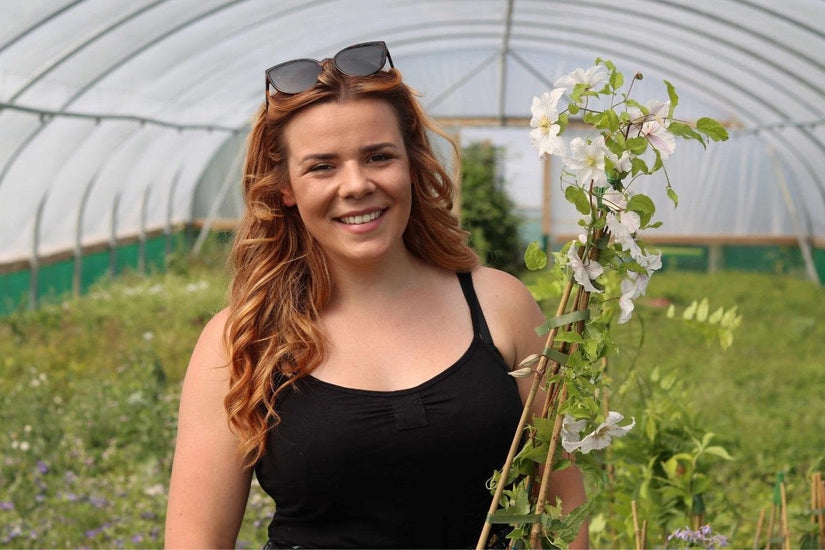Clematis Plants
By law*, you have to have a clematis in your garden. These colourful, flowering vines are one of the best loved climbing plants, and for good reason! There are so many variations of colour, flower size, shape, scent and flowering period that you may need help choosing. That’s where we come in…
*well it should be.
Need help picking?Sort and filter
Cheltenham
Meet Mollie
Climbers grown by specialists at the height of their game
What does it take to grow the strongest and best climbing plants in the show tent? Organic fertilisers, natural pest control and years of dedication from Mollie, our expert grower in Worcestershire. Professionally pruned and checked by hand, they’re guaranteed to put on a gold standard display in your garden, too.
Need help picking?
Clematis FAQs
Where is the best place to plant a clematis?
Most clematis will grow well in sun or partial shade but try to avoid heavily shaded areas as your clematis is less likely to flower.
What time of year should I plant a clematis?
Late spring or early autumn is the best time to plant your clematis as this is when the soil is moist and warm. Planting clematis in summer is also an option, but it will need additional watering to establish well.
How do I care for my clematis?
Make sure to water your clematis frequently while it’s getting established and finding its place in the world (or in this case, your garden!) Always keep the soil moist and ensure that your clematis getting enough sun as well as partial shade.
Should I prune my clematis?
Regular pruning encourages strong growth, flowering and also prevents your clematis getting in a mess! Do the right thing, prune your clematis.
How do I prepare my clematis for winter?
Pruning should be performed in late winter, approximately 30-45cm from the ground, ensuring that all dead growth is removed. We know it’s hard to say goodbye, but it’ll be worth it!
Do clematis come back every year?
With some good old TLC, your clematis will survive the winter and return with a bounty of blooms the following year.
What is the easiest clematis to grow in the UK?
Any clematis in the viticellas family will be the easiest clematis to grow, wilt-resistant and happy in most soils and in positions, although they prefer sun. Here are a few of our favourites:
- ‘Etoile Violette'
- ‘Madame Julia Correvon'
- And last but certainly not least, ‘Polish Spirit'.
The best soil type for a clematis?
Clematis will grow well in any soil type providing it is moist and well drained. If your soil is heavy or clay-based, mix in some fine gravel or perlite when planting, to help with drainage.
Does clematis die in winter?
The majority of Clematis will die down during the winter. The leaves will fall off and you’ll likely be left with just the stems but don’t worry, there is a happy ending here! New growth will appear in the spring and you’ll be reunited once more.
What should I plant with clematis?
Great news! You can plant just about anything with a Clematis as they like their roots shaded by other plants. Annuals or perennials are a wonderful choice.








